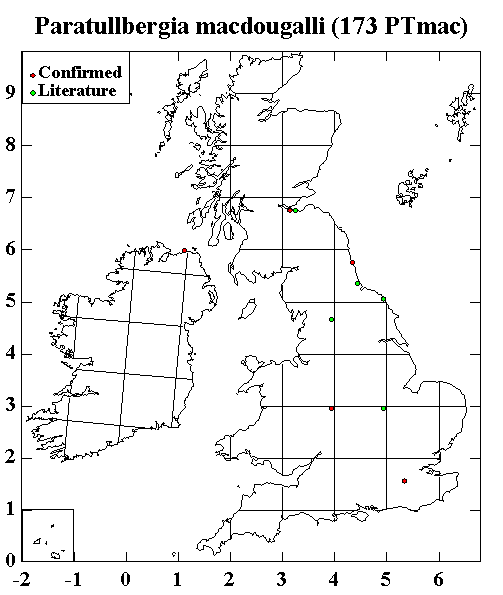|
Paratullbergia macdougalli is much less common than Paratullbergia callipygos although the records would suggest that it is probably a widespread and under-recorded species (with a possible north-easterly bias). The largest specimen I have seen was 0.95 mm in length. Paratullbergia macdougalli has prominent anal spines as long as a foot claw (Fig. 1), from which an empodium is absent (Fig. 2).
On the dorsal side of the second (abd2) and third (abd3) abdominal segments of Paratullbergia callipygos, the setae a2-a1-a1-a2 are in a straight line whereas in Paratullbergia macdougalli, setae a1-a1 are distinctly further forwards than the a2 setae (Figs. 3 and 4). Also in Paratullbergia callipygos, there is a pair of tubercles posterior to the crescent-shaped ridges; these tubercles are absent from Paratullbergia macdougalli (Fig. 1).
Back to main page
|
|









